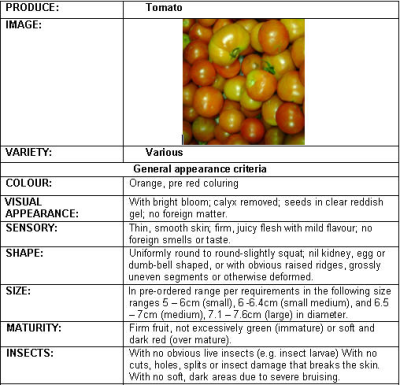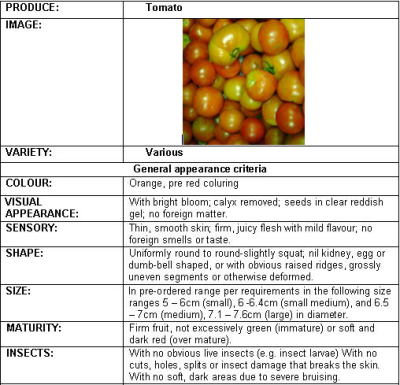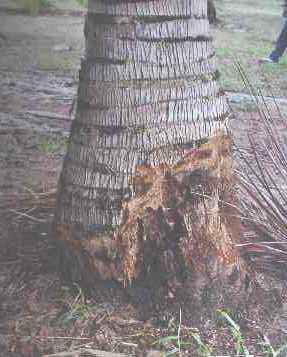


African palm weevils (<i>Rhynchophorus phoenicis</i>)
Adults are large weevils (40-55 mm in long), with a long snout and reddish brown in colour, and generally with 2 reddish bands on the thorax. Females lay eggs on wounds of various origins, on the mature stem as well as in the crown. Upon hatching the larvae (grubs) penetrate into the living tissues of the palm, feeding on the shoot and young leaves, where the insect completes its development in about 3 months. The damaged tissues turn necrotic and decay. Sometimes the grubs feed on the growing point killing the palm. Grubs are whitish-yellow, legless, and oval in shape; their head is reddish brown, and is armed with strong mandibles. Fully-grown grubs are 50 to 60 mm long. The pupal stage is passed within a cocoon of vegetal debris made by the grub at the end of its development. The African palm weevil usually damages young palms, yet may also, in exceptional cases, cause damage to mature crops.
The primary means of control for African palm weevil is preventative, using cultural and sanitary methods.
- Avoid wounds during plantation management. Adults are attracted to the odour of feeding sites and to injured palms, in which they lay their eggs.
- Remove all heavily attacked and wounded palms, along with those showing distinct growth disorders.
- Trap weevils. Traps made from thinned or wild palms that have been felled and split into longitudinal sections divert weevils away from cultivated palms, because adults are attracted to the chemicals emitted from damaged wood. Trap- heaps are frequently burnt and replaced with fresh trap wood. Burn trap- heaps frequently and replace them with fresh trap wood. Older traps can be sprayed with palm sap to maintain their effectiveness.
